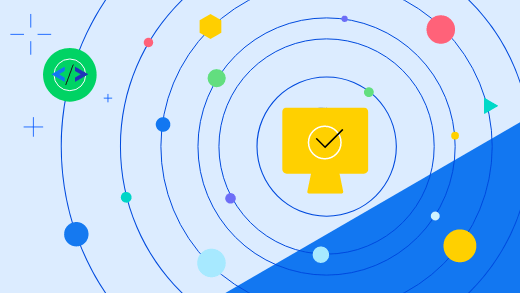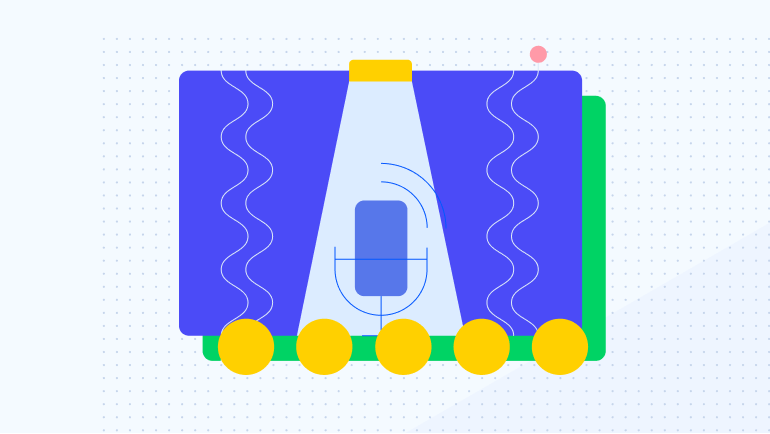
Supercharge Enterprise App Development
Build reliable business apps with secure deployment across any platform, device type, and cloud.

What's New in OpenEdge 12.8?
Our newest release is now available. Here are a list of the new features you'll want to check out.
Why OpenEdge
It’s reliability, cost-effectiveness and focus on addressing evolving demands, continues to make Progress OpenEdge a wise investment.
Become an OpenEdge Developer
Supercharge our impact and earn a competitive salary. Start your free OpenEdge Developer path and certification.
OpenEdge for Everyone

Developers have access to a comprehensive platform that empowers them to efficiently develop applications, seamlessly integrate various components, and effectively manage databases.

Database administrators (DBAs) can efficiently manage and optimize database configurations, security, performance, troubleshooting and issue resolution for applications built on the platform.

Business leaders drive innovation and achieve business goals with a comprehensive platform for the development, deployment and management of mission-critical enterprise applications.

End users experience the seamlessness of high-performance and scalable business applications developed and deployed on a robust and agile platform.
Your Mission-Critical Application Development and Deployment Solution
Develop and deliver business applications that are highly-available, high performing and agile. The OpenEdge platform supports your needs to address the demands of your customers and users today and tomorrow. The Progress OpenEdge approach provides measured steps towards development and deployment that eliminate the need for re-architecting. Take a moment to discover what OpenEdge 12 can do for your business.
Available
Unprecedented database uptime. Deliver closer to the demands of Five 9’s.
Powerful
Monitor the performance and availability through modern DevOps tooling.
Secure
Continuous security improvements to help you operate with minimal risk of compromise.
Agile
Combine OpenEdge functionality with AWS Cloud services.

See What’s New in OpenEdge 12.8
Learn more about all the exciting new features in the latest Long-Term Supported (LTS) release, OpenEdge 12.8. Now users can boost their developer productivity, enhance database management, and application security.
Learn More OpenEdge MCP Connector
OpenEdge MCP Connector
Harnesses AI and domain expertise to accelerate modernization, improve code quality and empower developers—directly in your chosen Integrated Development Environment (IDE)
 Become an OpenEdge Developer
Become an OpenEdge Developer
Supercharge your impact and earn a competitive salary. OpenEdge developers build rock-solid and innovative applications that are the backbone of travel, car manufacturing, healthcare, and financial companies across the globe who bet their business applications on OpenEdge.
 OpenEdge Training
OpenEdge Training
Get the best out of OpenEdge. From beginner to advanced, boost your knowledge of the OpenEdge database and grow your OpenEdge development, integration and management skills with on-demand courses and instructor-led training.
Hear from OpenEdge Users About Their
Business Success
Replicating to a SQL database (with Pro2 replication), enabling that particular server to be the one the other applications tap into took the load off of our student production and worked flawlessly. Honestly, it kind of saved our bacon.
Tom Condo Supervisor, I.S. Operations, Seminole Country Public Schools Learn more
OpenEdge provides us a stable database of alignment and gives us a very powerful ABL language connected to that environment to implement our business rules.
Leon Kersten CIO, Villa For You Learn more
And OpenEdge has given us speed and responsiveness, no matter how big the database, how many users or how high the transaction rate—there is no downtime.
Mehrdad Komeili The founder of My Office Apps Learn more
Partners for Success
Progress offers many programs and expert services to partner with you for success.
Progress OpenEdge By the Numbers
Partners
Business Applications
Customers
Application Users
Discover OpenEdge Training
Enhance your business with a quick and affordable way to train OpenEdge developers of all levels.

Learning & Resources

Progress OpenEdge 12.8
Your application evolution journey starts here.









